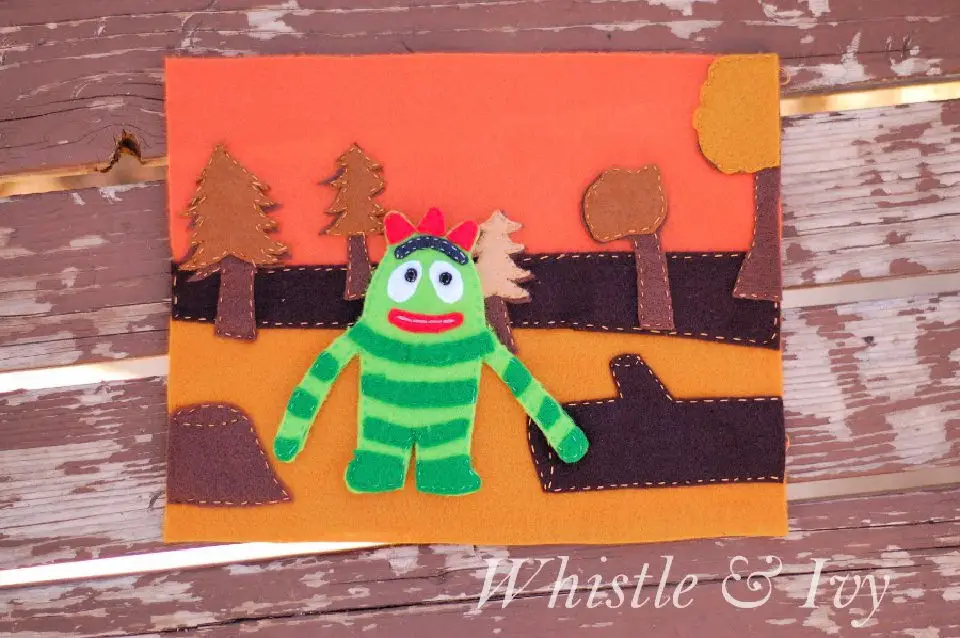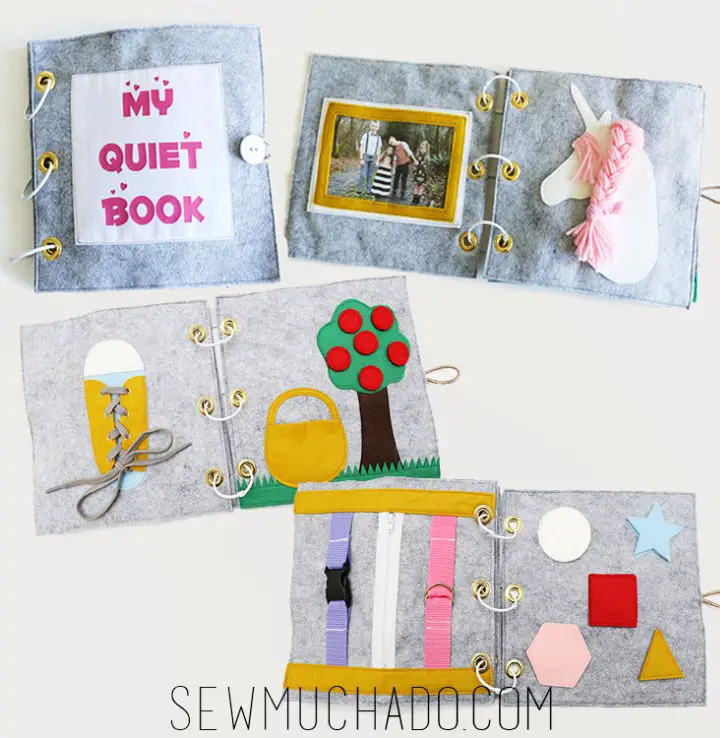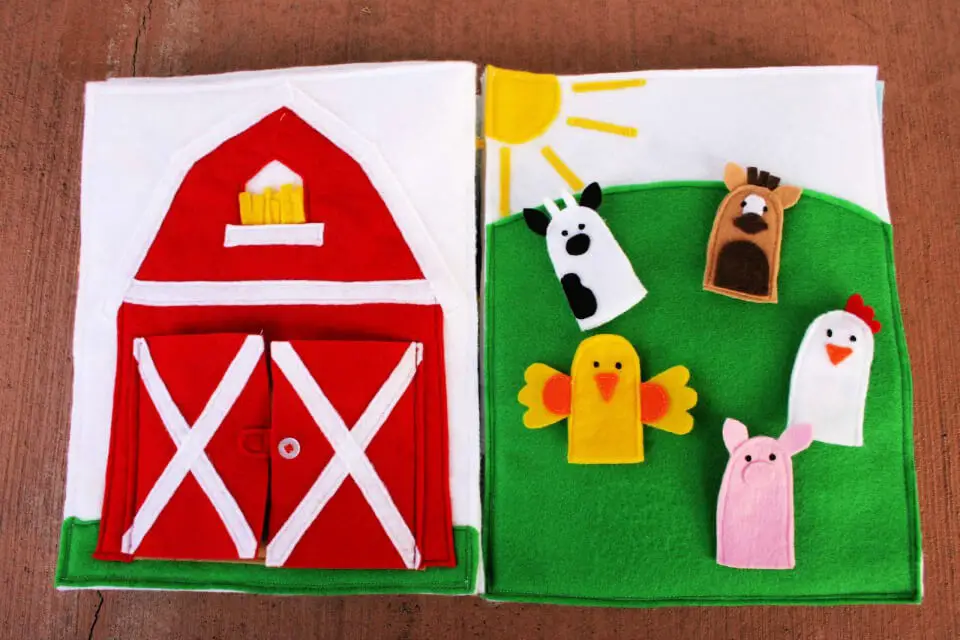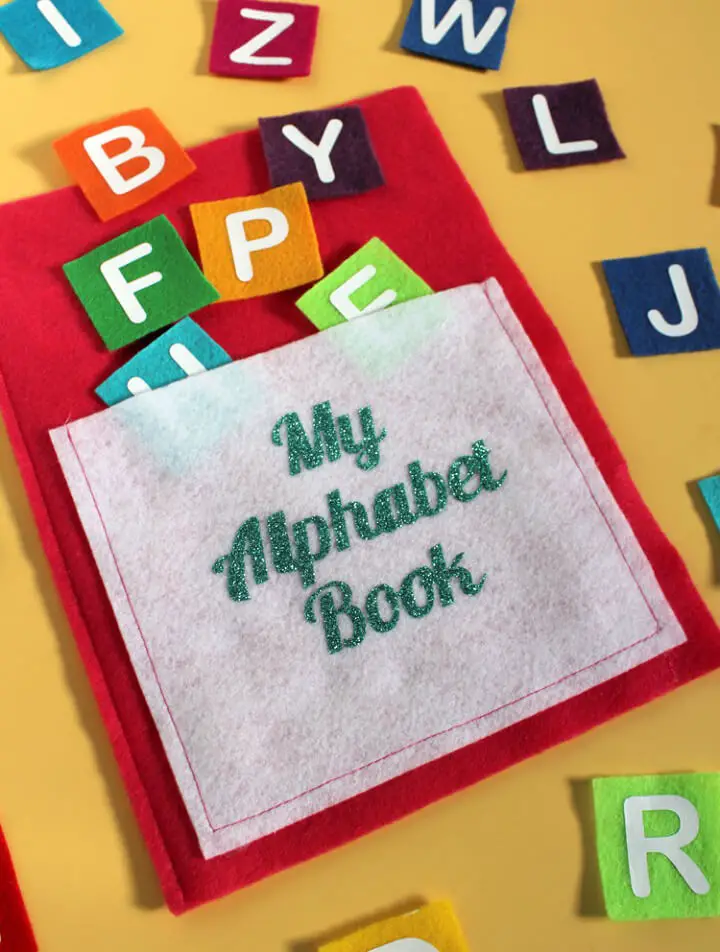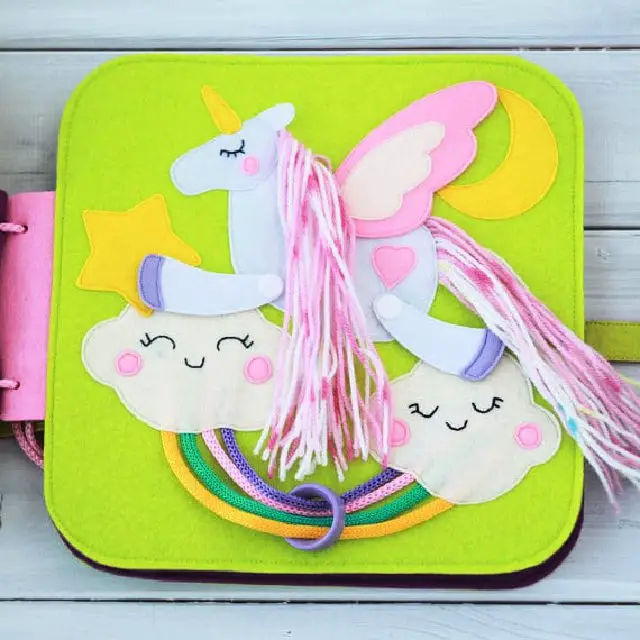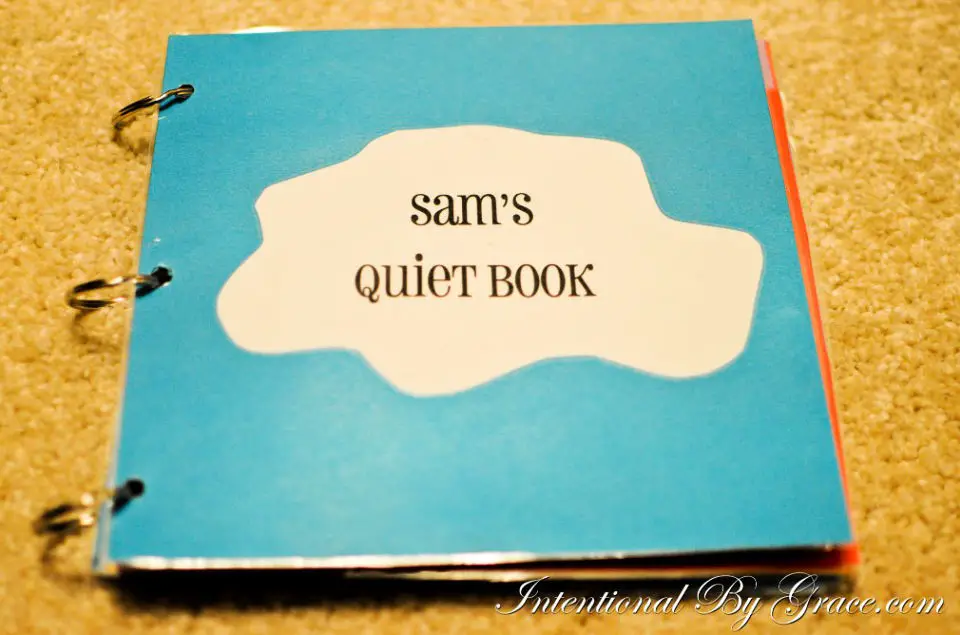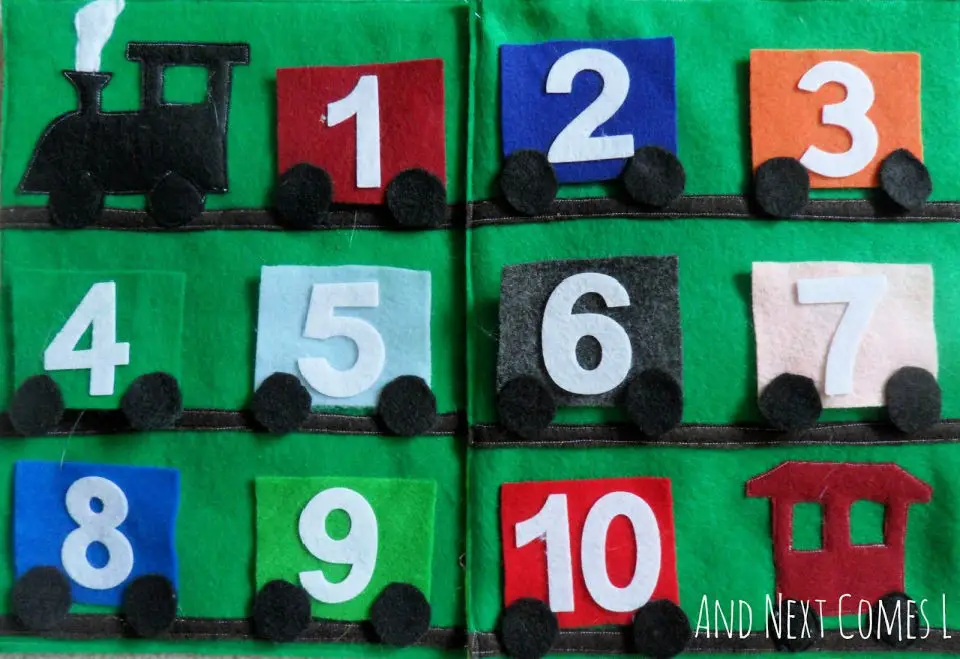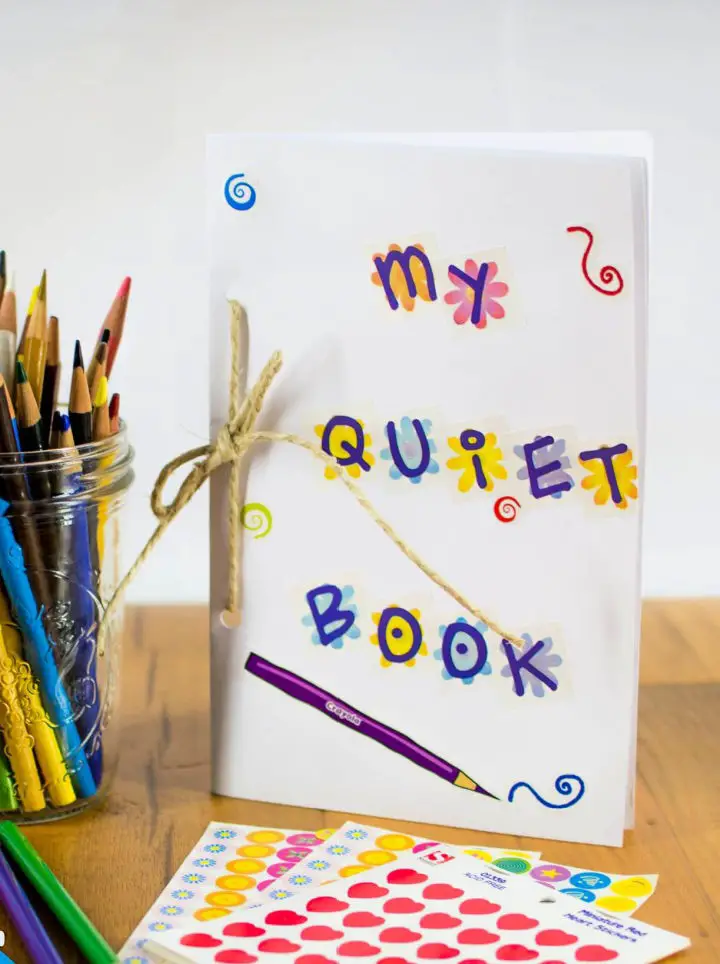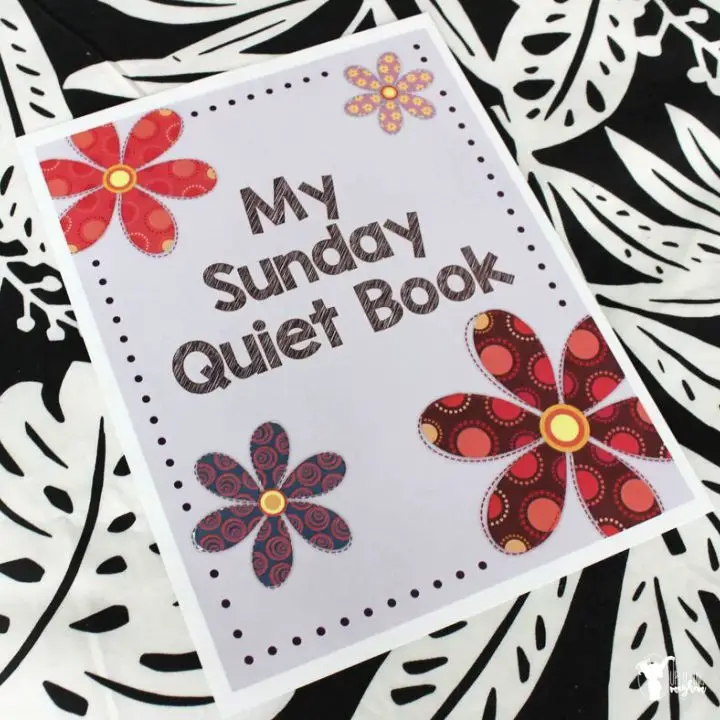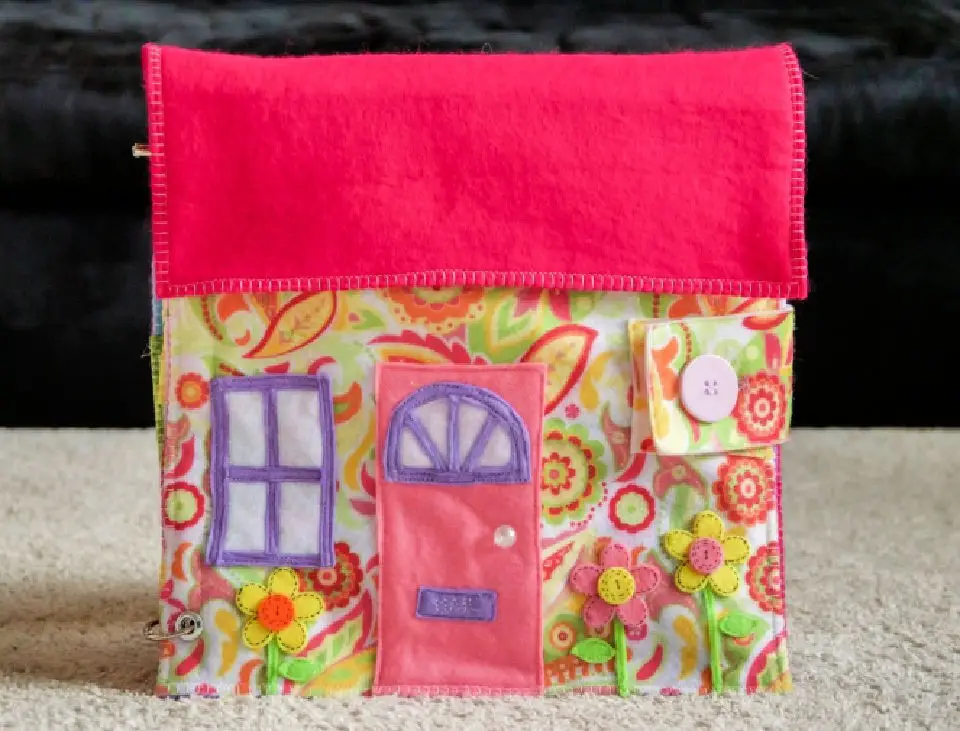
Making DIY quiet books is an innovative way to stimulate your child’s learning journey. By exploring 20 straightforward DIY quiet book designs, you can create a customized educational resource that fosters fundamental concepts, fine motor skills, and linguistic development. Whether it’s about harnessing the power of play or encouraging language growth, each design is carefully crafted to provide meaningful engagement for your little one.
While embarking on a quiet book project may seem overwhelming at first, this guide simplifies the process by providing guidance on theme selection, material gathering, and page planning. Additionally, you’ll receive valuable tips on customization and maintenance to ensure your personalized keepsake remains treasured for years to come.
Educational Insights for DIY Quiet Book Patterns
To maximize the educational value of a DIY quiet book, it’s essential to carefully consider the cognitive and motor skills that each activity will engage. This can be achieved by intentionally designing quiet book pages that align with specific learning objectives. By incorporating activities that target various aspects of child development, you’ll create a comprehensive resource that supports children’s growth in areas such as problem-solving, fine motor control, and creative expression.
Learning Through Play
Beyond being a leisurely activity, quiet books offer a unique opportunity for play-based learning. By carefully designing each activity, parents and educators can intentionally cultivate children’s cognitive skills, hand-eye coordination, and problem-solving abilities, making quiet book-making a valuable tool for early childhood development.
Incorporating Basic Concepts
When it comes to crafting educational content for young learners, it’s essential to consider the unique needs and abilities of each age group. For toddlers, introducing basic concepts through interactive and visually engaging materials can be highly effective. This can be achieved by creating pages with brightly colored shapes that encourage color recognition. Additionally, incorporating various textures using different fabrics can stimulate their sensory exploration skills.For preschoolers, it’s crucial to build upon the foundational knowledge gained during toddlerhood. One way to do this is by introducing numbers and counting concepts through hands-on activities like removable piece puzzles. This not only reinforces number sense but also develops critical problem-solving skills. Furthermore, incorporating alphabet pages with corresponding pictures can foster letter recognition and lay the groundwork for future reading proficiency.
Developing Fine Motor Skills
Developing fine motor skills is a crucial part of childhood development, and there are several activities that can help foster this growth. For instance, simple tasks like sewing buttons and buttonholes can provide an opportunity for children to practice their dexterity. Another way to challenge their fine motor abilities is by adding laces or ribbons for them to tie and untie. These types of activities not only improve coordination and hand-eye coordination but also help build confidence and independence as children learn to complete tasks on their own.
Encouraging Language Development
When it comes to engaging young minds, a crucial aspect of storytelling lies in crafting scenarios that empower children to take control of their own narratives. By doing so, you’re not only fostering their imagination but also nurturing their linguistic and literary skills. Imagine allowing them to weave their own tales, using vivid vocabulary and clever plot twists – the possibilities are endless!
Fostering Emotional Intelligence
The Emotions Page can be a powerful tool for helping children develop emotional intelligence by visually representing a range of facial expressions that convey different emotions. By including images of faces with varying degrees of happiness, sadness, anger, fear, and surprise, parents and educators can provide young learners with a tangible way to identify and articulate their feelings.
How to Get Started with DIY Quiet Book Patterns
Embarking on a DIY quiet book project can be an incredibly fulfilling experience, whether you’re creating for your own child’s enrichment or as a thoughtful gift. Quiet books, also known as busy books, are tactile masterpieces that captivate young minds through a medley of textures, colors, and engaging activities. By following this step-by-step guide, you’ll be well on your way to crafting a unique and educational quiet book that will delight children and stimulate their senses.
Choosing Your Quiet Book Theme
When crafting a quiet book for your child, the first step is to choose a theme that resonates with their interests or learning goals. This theme can serve as the foundation for creating engaging and educational activities. Some popular themes for quiet books include alphabet and numbers, animals and nature, daily routines, fantasy and adventure, and shapes and colors. These themes can be used as a starting point for designing activities that cater to your child’s unique needs and preferences.
Gathering Materials
To create a quiet book that’s engaging and fun, you’ll need to start by gathering the necessary materials. A good place to begin is with the foundation of your pages – felt or fabric. Select a variety of colors to add visual interest. Next, you’ll require scissors for cutting out shapes and designs from your chosen material. In addition to scissors, you’ll also need a few basic sewing tools: thread and a needle. Alternatively, you can opt for a no-sew approach using fabric glue. To bring your pages to life, you’ll want to add some interactive elements like velcro, buttons, or zippers. Finally, you’ll need templates or patterns to help guide your cutting and sewing. You can find free patterns online or create your own unique designs.
Planning Your Pages
Before embarking on the creative process of crafting quiet book pages, it’s essential to take a moment to plan and conceptualize each individual page. As you envision the ultimate design, consider the activities or concepts you wish to feature on each page. Take a few minutes to sketch out your ideas on paper, carefully thinking through how each page will visually and functionally come together. Don’t forget to factor in the overall size of your quiet book, as this will ultimately influence the dimensions of your pages and components. By taking the time to thoughtfully plan and design, you’ll be well-prepared to bring your creative vision to life.
Making Your First Page
To create a sturdy foundation for your interactive project, start by cutting two identical pieces of felt or fabric to serve as the front and back of your first page. This will provide a solid base for your design. Next, unfold your creative potential by arranging the elements of your activity on one of these pages. Use this opportunity to experiment with shapes, colors, and interactive features that will make your project truly engaging. Once you’ve finalized your design, carefully attach the various components using either sewing or glue techniques. Be sure to secure any additional details such as buttons, zippers, or Velcro to prevent them from coming loose. Finally, place the second base page behind the completed activity page and sew around the edges to seal it in place. Leave a small gap if you desire a padded appearance by adding stuffing through this opening.
Assembling Your Quiet Book
Once your pages are complete, it’s time to bring everything together. Start by crafting a cover for your book. This can be done using two larger pieces of fabric or felt, which can then be adorned with the title or any other design that resonates with the content. Next, gather all your pages and arrange them in order. To create the spine, you’ll need to sew along one edge, effectively binding the pages together. Alternatively, you can opt for a more modern approach by punching holes and using rings or ribbon to keep everything secure.
Tips for Success
When embarking on a quiet book project for the first time, it’s essential to begin with a smaller scale model that has fewer pages, making it more accessible and less overwhelming. This approach allows you to ease into the creative process without feeling overwhelmed by the scope of the project. Moreover, consider involving your child in the design and construction process, as their input can be invaluable in choosing themes, colors, and activities that align with their interests and personality. Remember, crafting a quiet book requires patience, particularly if you’re new to sewing or crafting. Embrace this aspect of the process, as it allows for a more enjoyable and fulfilling experience.
Customization Ideas for DIY Quiet Book Patterns
Transforming a quiet book from a mere pattern-following endeavor into a truly personalized creation requires more than just adhering to instructions. It’s an opportunity to infuse your project with unique characteristics that reflect your personality and creativity. To help you unlock this potential, here are some ideas to get you started:
Choose a Theme
When creating a quiet book, it’s essential to start by choosing a theme that sparks inspiration or resonates with the child you’re making it for. This could be anything from exploring nature, showcasing various animals, or highlighting seasonal changes. Alternatively, you might opt for themes like alphabet lessons, numerical concepts, or daily routines. By selecting a themed approach, not only will your quiet book look visually appealing and cohesive, but it can also serve as an educational tool. The right theme can help guide the design of your project and provide a sense of direction.
Mix and Match Fabrics
Embracing diversity in fabric choice can lead to a rich sensory experience for children. Experiment with blending different textures and colors by incorporating felt, cotton, satin, or even denim into your book’s design. This unique combination not only engages young readers’ sense of touch but also adds an extra layer of visual appeal, making the pages come alive.
Add Personal Elements
When crafting a personalized project, consider infusing it with sentimental value by incorporating elements that hold significance to the intended recipient. This might involve incorporating their favorite colors, shapes, or beloved characters. To take it a step further, you could also include cherished memories by adding family photos within secure pockets, making the final product an even more meaningful and treasured keepsake.
Interactive Features
To elevate the reading experience, incorporate interactive components such as buttons, zippers, latches, and flaps into the book design. This thoughtful addition not only sparks excitement among young readers but also fosters the development of essential fine motor skills, further enriching their educational journey.
Embellish with Embroidery
Infusing your quiet book with embroidered flourishes can elevate the overall aesthetic and make it even more special. Whether you opt for a delicate border or a intricate design, the added dimension of embroidery brings a unique, handmade charm to each page. The subtle texture and varied colors of the stitches add depth and visual interest, making the pages truly come alive.
Safety First
When modifying or personalizing products, prioritizing safety is crucial. As you assemble the components, double-check that each part is firmly secured to prevent any potential hazards, such as small items being detached and posing a choking risk for little ones.
Skill Level Assessment for DIY Quiet Book Patterns
When creating a DIY quiet book, it’s crucial to consider the complexity of the designs you’ll be working with. A good starting point is to evaluate the skill level required for each pattern, taking into account your personal crafting expertise. To make an informed decision, ask yourself questions like: What are my strengths and weaknesses as a crafter? Can I handle intricate details or do I prefer simpler designs? By understanding what patterns suit your abilities, you’ll be able to create a quiet book that not only looks great but also provides the sensory experience you’re aiming for. As you plan out your project, take the time to reflect on your skill level and let it guide your selection of patterns.
Beginner Patterns
The signature features of this creative process include simplicity in shape and design, minimal manipulation of materials through sewing or cutting, and straightforward assembly techniques. These characteristics come together to create unique and engaging pages. For instance, a sun made from felt with a smiling face is a great example of how this approach can bring joy and warmth to the final product. Similarly, a fabric apple adorned with a button “worm” that weaves in and out showcases the versatility and whimsy of this process.
Intermediate Patterns
The fabric of children’s books has evolved over time, incorporating new design elements that captivate young readers. One notable characteristic is the increased complexity of illustrations, featuring more intricate designs and shapes that invite exploration. This can be seen in the incorporation of interactive features like zippers or snaps, which encourage kids to engage with the story on a deeper level.
Furthermore, designers have started to layer fabrics for added dimensionality, creating textures that stimulate tactile curiosity. These innovative approaches not only enhance the visual appeal but also foster an emotional connection between the child and the narrative. For instance, an imaginative garden scene might feature lift-the- flap flowers that reveal insects underneath, allowing kids to discover new wonders. Similarly, a counting page could include removable felt numbers and corresponding images, offering a hands-on experience that reinforces learning.
Advanced Patterns
The intricacies of this medium are characterized by the need for precision in design creation, as well as the incorporation of multiple interactive elements within a single page. Furthermore, advanced sewing techniques are often employed to bring these designs to life. This unique combination of complexity and interactivity sets this medium apart from others.
Examples of its capabilities include the creation of a cityscape with movable cars on tracks and buildings that open doors, as well as an alphabet page featuring each letter in a different texture or activity. These innovative examples showcase the versatility and creativity that can be achieved through this medium.
Troubleshooting Tips for DIY Quiet Book Patterns
As you embark on creating a DIY quiet book, you may encounter unexpected obstacles. To ensure a smooth and enjoyable experience, it’s essential to be prepared for common challenges that may arise. By arming yourself with these troubleshooting tips, you’ll be better equipped to overcome any hiccups and ultimately produce a high-quality quiet book.
Cutting Fabric Pieces
When working with fabric pieces, it’s crucial to ensure that they align with the intended pattern sizes. To avoid frustration and wasted materials, take a moment to double-check your measurements before starting to cut. Invest in high-quality cutting tools like sharp scissors or a rotary cutter to achieve precise edges, which will make all the difference in the quality of your finished project.
Securing Pages
When it comes to keeping pages in order, a common issue arises where they fail to stay bound together. To address this, consider reinforcing the binding with a sturdy thread or opting for book rings that facilitate effortless page turning.
Attaching Small Parts
As you navigate the intricacies of crafting, it’s not uncommon to encounter small components like buttons that begin to detach. To prevent this issue from compromising your project’s overall quality and appearance, consider using strong adhesives to reattach these wayward elements or opt for a sturdy stitching approach that ensures a secure hold.
Aligning Elements
When reviewing the layout of your design, it’s not uncommon to encounter issues with elements being misaligned. To avoid this frustration, take a proactive approach by using a ruler and fabric chalk to mark precise alignments beforehand. This simple yet effective technique ensures that all components are correctly positioned as you assemble them, streamlining the process and reducing the likelihood of costly rework later on.
Washable Pages
When it comes to creating a quiet book, one of the biggest concerns is the potential for it to get dirty or damaged over time. To mitigate this risk, consider selecting washable fabrics that can withstand gentle cleaning and avoid using glue or other adhesives that may compromise the integrity of the materials. Additionally, don’t forget to add a care label with washing instructions so that anyone handling the book in the future will know how to properly clean it without causing harm.
Maintenance and Care for DIY Quiet Books
To preserve the longevity of your DIY quiet book, which has likely become a treasured companion for you or a loved one, it’s crucial to adopt a routine for its maintenance and care. By following these simple steps, you’ll ensure your quiet book remains in excellent condition, continuing to provide countless hours of entertainment and education for years to come.
Choosing the Right Materials
When selecting fabrics for your [product/article], prioritize durability by opting for high-quality options that can withstand regular use without showing signs of wear and tear. Additionally, consider washable materials that make maintenance a breeze. This not only ensures the longevity of your product but also simplifies upkeep and reduces the need for frequent replacements.
Cleaning Instructions
For minor spots, employ a gentle approach by using a damp cloth infused with mild soap to carefully clean the stained area. In contrast, if your book can be machine washed, opt for a delicate cycle utilizing cold water, followed by air drying to prevent damage.
Storage Tips
To ensure the longevity of your quiet book, store it in a location that maintains a dry environment to prevent mold and mildew growth. Additionally, avoid exposing the book to direct sunlight, as this can cause colors to fade over time. Instead, keep the book in a shaded area where it will be protected from harsh light.
Regular Checks
To ensure your DIY quiet book remains in top condition, regular inspections are crucial. This involves checking for any loose components or signs of wear and tear that may require attention. By identifying and addressing these issues promptly, you can prevent minor problems from escalating into major ones. In addition to inspections, it’s also important to perform repairs as needed. Whether it’s mending tears or reattaching loose items, taking the time to make these adjustments will help maintain the book’s integrity and keep it safe for use over the long term.
FAQs About DIY Quiet Books
Get the inside scoop on creating your own DIY quiet books with this extensive FAQ section. Uncover expert advice, innovative ideas, and creative inspiration to help you craft a one-of-a-kind quiet book that suits your unique style.
What is a quiet book?
Soft, tactile books, often crafted from fabric or felt, are designed to captivate the imagination of young minds. These quiet books offer a unique form of sensory engagement, perfect for fostering early learning and development through hands-on exploration.
How can I start making a quiet book?
To embark on a creative journey, start by selecting a theme that resonates with you. Next, gather any necessary materials or supplies required for the project. Consider what types of activities or elements will be included to bring your vision to life. Once you have a clear idea of what you want to create, begin envisioning the overall design and aesthetic. From there, start crafting each individual page or section, allowing your imagination to flow freely.
What materials do I need for a quiet book?
A plethora of common materials are typically used in sewing projects, including versatile options like felt, fabric, and thread. These staples are often accompanied by a variety of accessories that enhance the overall look and functionality of the final product. This may include utilitarian elements such as needles, scissors, and zippers, as well as decorative items like buttons and ribbons.
How do I bind a quiet book?
To create a quiet book, you have several options for binding the pages together. One approach is to sew the pages into place, which provides a sturdy and long-lasting bond. Alternatively, you can use grommets and rings to create a flexible and adjustable spine that allows the pages to turn smoothly. For a more creative solution, consider making a fabric spine that allows the pages to open and close easily, providing a tactile experience for young readers.
Can I wash a quiet book?
To maintain the integrity of your book, opt for gentle care methods that prioritize preservation over thorough cleaning. For starters, select materials that can withstand repeated washing without compromising their structure. Then, when accidents occur, focus on spot cleaning rather than indulging in intense scrubbing. If a more thorough clean is necessary, resort to hand washing with mild soap and lukewarm water. Finally, ensure the book air dries completely to prevent any moisture-related damage.
How do I secure small parts in a quiet book?
When assembling the final product, it’s crucial to ensure that every component is thoroughly secured. To achieve this, start by making sure that each small part is carefully sewn onto its designated spot. For added peace of mind and a secure hold, consider using non-toxic fabric glue as an additional reinforcement measure.
What age is appropriate for a quiet book?
When it comes to quiet books, they’re often a great fit for little ones aged two to five years old. However, it’s essential to keep in mind each child’s unique development and take necessary precautions to ensure their safety while engaging with the book.
How can I make a quiet book durable?
To ensure your products can withstand repeated usage, opt for premium materials that are built to last. Additionally, make sure to reinforce critical points like seams and attachments to prevent wear and tear from excessive handling.
Can I make a quiet book with no sewing experience?
For those looking for hassle-free solutions, the good news is that there are alternative methods to traditional sewing. Two popular approaches include utilizing fabric adhesive, which eliminates the need for needles and threads altogether. Alternatively, pre-assembled DIY kits can be a great option, as they often require minimal assembly and effort. These convenient alternatives can help take the stress out of crafting and make it more accessible to those who may not have extensive sewing experience.
How long does it take to make a quiet book?
The duration of the process is highly dependent on the intricacy of the designs and the sheer volume of pages involved. While the time frame can be quite varied, it’s not uncommon for it to span anywhere from a handful of hours to several weeks or even months.
20 Easy DIY Quiet Book Patterns
Are you searching for engaging and instructive pursuits for children? We’ve curated a selection of 20 simple quiet book patterns that will provide endless opportunities for imaginative exploration. Explore this array of DIY projects to discover the perfect way to foster creativity and learning in your little ones.
Make an Under the Sea Quiet Book
Discover the enchanting world of underwater exploration through Petit Bout de Chou’s comprehensive guide to creating an ‘Under the Sea’ themed quiet book page. This engaging DIY project brings together simple sewing and embroidery techniques on felt, allowing you to craft a one-of-a-kind, tactile gift for little ones that combines learning with interactive play. By following each step from setting the oceanic backdrop to bringing adorable sea creatures to life with hook and loop fasteners, you’ll embark on a rewarding crafting journey that produces a serene and educational toy perfect for toddlers.
Free T-Shirt Patterns
Indulge in a treasure trove of complimentary t-shirt patterns, ideal for crafting a one-of-a-kind and fashionably stunning personal style.
DIY Cricut Maker Felt Mermaid Quiet Book
Create a captivating felt mermaid quiet book with Sweet Red Poppy’s step-by-step guide, perfect for gifting to little ones. This no-sew project leverages the precision of the Cricut Maker’s Rotary Blade to cut through wool felt, resulting in sturdy and visually appealing pieces. The tutorial takes you through each stage, from downloading design files to assembling the book with ease. Using materials like Thermoweb glue and an Easy Press, you’ll craft a delightful activity book full of helpful tips, ensuring an engaging crafting experience that yields a playful quiet book capable of captivating children’s imaginations.
Free Cricut Maker Quiet Book Pattern
Transform your quiet book creation experience with Kimberly Coffin’s comprehensive Cricut Maker Quiet Book Tutorial on Sweet Red Poppy. This DIY delight is perfect for crafty enthusiasts, providing an in-depth guide on working with felt and mastering the Cricut Maker Rotary Blade. With a mere handful of essential materials – including vibrant felt, iron-on vinyl, and fabric glue – you’ll be well on your way to crafting a stunning educational tool that’s as engaging as it is easy to make. The provided cut files streamline the process, ensuring a seamless crafting experience. Pair this with an accompanying video tutorial, and you’ve got a project that’s not only fun to create but also a joy for little ones to explore. Whether you’re making it as a thoughtful gift or a personal keepsake, this charming quiet book is sure to bring a smile.
DIY Outdoor Games
Embark on an exciting adventure by creating a curated list of interactive and captivating DIY outdoor games that cater to a wide range of ages. Prepare for a thrilling experience as you discover the perfect entertainment options for your upcoming outdoor get-together, ensuring unforgettable moments with friends and family.
Handmade Gabbaland Quiet Book
Bring the whimsical world of Yo Gabba Gabba to life with the enchanting Gabbaland Quiet Book project. Whistle and Ivy’s expert guide will transport you to Brobeeland, a fantastical landscape where imagination knows no bounds. With step-by-step instructions from Bethany, you’ll craft an interactive quiet book page featuring vibrant felt pieces and tactile textures that invite little hands to explore. A printable template and comprehensive list of materials ensure a stress-free crafting experience. Whether creating for your child or gifting to a fellow fan, this project is the perfect catalyst for imaginative play and storytelling. So gather your supplies – including felt sheets, thread, and needle – and embark on a magical adventure that’s sure to delight fans of all ages.
How to Make a Quiet Book – Free Pattern
Unleash a world of creativity and quiet time fun with Sew Much Ado’s Free Quiet Book Pattern. This comprehensive guide helps you craft a unique book that will keep little ones engaged and content in situations where silence is required. The pattern features six distinct activity pages, including a family photo page, unicorn braid page, and shapes page, offering a diverse range of educational interactions.With Sew Much Ado’s expert guidance, you’ll have everything you need to create a beautiful and durable quiet book. A comprehensive list of supplies and step-by-step instructions ensure that even the most novice sewer can achieve professional-looking results. The provided templates make cutting out pieces effortless, and helpful tips are included to guarantee the best outcomes.Whether you’re an experienced crafter or just starting out, this quiet book pattern is perfect for creating a charming and practical project that will provide hours of entertainment for children while developing their fine motor skills and recognition abilities.
Cool Pirate Island Tic-Tac-Toe Quiet Book Page
Step into the world of creative learning with the Pirate Island Tic-Tac-Toe Quiet Book Page from Imagine Our Life. If you’re eager to engage your little ones in a hands-on, educational activity that’s equal parts fun and educational, this tic-tac-toe project with its pirate theme is an excellent choice. The comprehensive guide provides clear, easy-to-follow instructions for creating a vibrant, textured play island that serves as both a game and a treasure trove of learning and development opportunities. With this craft, you’ll not only sew sequins to represent sparkling water but also create a treasure chest pocket and fashion Xs and Os from felt and jewels – all while enhancing your child’s fine motor skills and strategic thinking abilities. Whether at home or on-the-go, this quiet book page is perfect for playtime, offering a unique bonding experience that’s both engaging and easy to understand.
Barn and Farm Animals Finger Puppets Quiet Book
Get creative with the Farm Page from Sunshine, Lollipops, and Rainbows, a unique project designed to help children bring their imaginative play to life. This charming farm-themed page features a barn that opens up to reveal adorable finger puppets of farm animals, inviting kids to engage in role-playing activities. The expansive grassy area surrounding the puppets provides ample space for creative exploration. For DIY enthusiasts, downloadable templates and easy-to-follow instructions are available, allowing you to customize the project with your personal touch. The included latch design ensures that your creations remain secure when not in use. Join us tomorrow as we unveil more inspiring quiet book pages, and get ready to craft a memorable play experience for children.
Make an Alphabet Quiet Book – Step by Step
Crafting a DIY alphabet matching game provides a delightful way for enthusiasts to engage and educate preschoolers. The Craft Patch offers a straightforward tutorial for creating a colorful, book-style game using felt and iron-on vinyl. The finished product features individual felt letter squares and a storage pocket on the front cover, offering a hands-on learning experience for young children. For those who may be hesitant about sewing, the option to use hot glue is provided, making this craft accessible to a wider audience. Beyond its functional benefits, this project also offers an opportunity to personalize the book by adding a child’s name, making it a meaningful and rewarding experience. Moreover, it serves as a valuable educational tool for early literacy development, making it an excellent choice for crafting enthusiasts seeking to promote learning.
DIY Paw Patrol Finger Puppets Quiet Book
Bring the excitement of Paw Patrol to life with a delightful and engaging finger puppet craft from Color the Moon! This unique combination of creativity and problem-solving skills is perfect for little ones who love Nickelodeon’s beloved rescue dog characters. The featured page showcases six adorable felt finger puppets of Chase, Rubble, Zuma, Marshall, Rocky, and Skye, accompanied by a cleverly designed lookout tower that doubles as storage – ideal for quiet times at home or car rides. With easy-to-follow instructions and imaginative play-promoting design, this DIY project is an excellent way to engage your child in a creative and quiet activity.
Homemade Quiet Book Page of Unicorns
Crafting a Quiet Book can be an enjoyable and fulfilling experience for makers looking to create engaging, interactive books for little ones. This hands-on project allows you to get creative while providing a valuable tool for quiet play and learning. By incorporating personalized elements, such as themes and activities that cater to developmental and sensory skills, you can tailor the book to suit your child’s unique needs. The process of making a Quiet Book involves selecting sturdy materials like felt and fabric, determining the size and shape of the book, and constructing each page using simple instructions. You’ll also have the flexibility to choose from various finishing options, including sophisticated binding techniques or simpler no-sew methods. As you work on this project, your goal is not only to create a functional learning tool but also to craft a keepsake that showcases your craftsmanship and serves as a testament to the bond between you and your child.
Make a Quiet Book for Toddlers
Crafting a quiet book for your toddler can be an enjoyable experience that fosters learning and keeps them occupied during travel or quiet times at home. Leigh Ann Dutton, of Intentional By Grace, shares her personal journey in creating a no-sew quiet book for her son Samuel using readily available materials like card stock, Velcro, and a laminator.
The quiet book features an array of interactive pages that include name spelling with Velcro letters, shape matching, and a stop-and-go page for color recognition and sequence learning. Her step-by-step guide not only provides inspiration but also showcases the success and delight her toddler experienced in using the handmade book. This DIY approach to quiet books is ideal for parents seeking to create a personalized and educational toy without requiring advanced crafting skills.
Adorable DIY Lion Quiet Book Page
Step into the whimsical world of quiet book crafting with Sunshine, Lollipops, and Rainbows, where the majestic lion page warmly greets you. This sensory-rich page is designed to stimulate your little one’s senses, featuring a diverse assortment of textured ribbons that invite exploration and play. From silky smooth to bumpy rough, each ribbon adds a unique tactile dimension, making it an excellent tool for fostering sensory awareness. The lion’s inviting smile sets the tone for a delightful and educational experience. For crafty parents looking to create this engaging page, a complimentary template is available for download, providing a clear guide for assembling your own lion page. Follow the step-by-step instructions and enjoy a seamless crafting journey that yields a joyful result that babies will adore exploring.
Colored Felt Number Train Quiet Book Page
Transform a traditional learning experience into an immersive adventure by crafting a captivating number train quiet book page that will captivate little ones’ hearts and minds. This hands-on activity is specifically designed to help young learners develop their counting skills in a fun, interactive way. The vibrant felt train cars feature bold numbers, which can be arranged in sequential order to build number recognition skills. Each piece securely attaches to the page with Velcro, making it easy for small fingers to handle and manipulate. The sturdy train tracks and engine are sewn onto the background, providing a solid foundation for the numbered cars. As children engage in imaginative play, they’ll simultaneously improve their counting abilities, developing a deeper understanding of numbers and their relationships. This delightful educational experience is waiting to be brought to life in your next DIY project – visit our site to learn how.
Making Your Own Felt Quiet Book
Create a captivating and educational quiet book for your little one with First Time Mom and Losing It’s comprehensive guide. The latest installment of their Quiet Book How-To Series showcases the process of crafting a Matching Color Flower Page, which enhances learning through a fun color-matching activity. With crystal-clear instructions, this engaging project requires only basic sewing skills, colorful felt, buttons, and a dash of creativity. The tutorial also provides step-by-step guidance on final assembly, ensuring your homemade quiet book has a professional and long-lasting finish. Get ready to create a treasured educational tool that will delight both you and your child!
Beginner-Friendly DIY Quiet Book
Create a one-of-a-kind, engaging quiet book for your little ones with this user-friendly DIY guide from The Realistic Mama. This project is perfect for quiet moments, long car rides, or waiting rooms, as it includes five straightforward activities designed to spark children’s imaginations and foster creativity and fine motor skills. With step-by-step instructions, you’ll learn how to assemble a book featuring sticker pages, drawing exercises, and more. This fun and educational tutorial makes crafting a personalized quiet book an enjoyable experience that will leave your kids with a treasured keepsake.
Free Printable Sunday Quiet Book Pattern
Create a serene sanctuary for your toddlers with DIY Quiet Book ideas from Uplifting Mayhem. This accessible guide empowers busy mothers to craft a customized Busy Book without requiring any sewing skills. By incorporating engaging, educational activities like shape-matching and rope-braiding, you’ll keep your little ones enthralled and learning while you attend to other tasks. These hands-on pages will not only foster your child’s development but also make each Sunday (or any day) a special moment to cherish. To get started, take advantage of the free printable available and begin assembling your one-of-a-kind Quiet Book today.
Pretty Handmade Dollhouse Quiet Book
Transforming a DIY dollhouse quiet book into a one-of-a-kind, interactive toy for your little one is an exciting way to foster their imagination and creativity. By following the detailed guide provided by Diapers and Dumbbells, you’ll be able to create a personalized keepsake that combines the art of crafting with the joy of imaginative play. From preparing felt pages to sewing intricate miniature furniture, every step of the process is carefully outlined, ensuring that your finished product will withstand the test of time and repeated use. By embracing your crafty side and making this charming dollhouse book, you’ll be gifting your child a treasured part of their playtime routine.
DIY Cricut Explore Fabric Quiet Book for Toddlers
Unleash your creativity and create a DIY Toddler or Baby Quiet Book using your Cricut Explore or Cricut Expression machine. This comprehensive guide takes you through a step-by-step process of cutting fabric with precision, opening up endless possibilities for crafting engaging and educational activities for your little one’s entertainment. To get started, you’ll need access to Cricut images, essential supplies such as felt, quilting cottons, and the Cricut Easy Press. The tutorial also includes in-depth instructions on preparing the pages, featuring fun activities like shape matching and seasonal tree decoration. Once you have the design space files, you can start crafting a unique quiet book that will captivate toddlers with its vibrant, textured pages.
How to Bind a Quiet Book – Step by Step
Crafting a quiet book that exudes charm and durability requires meticulous attention to detail in binding it properly. Our comprehensive guide at Sew Much to Create delves into the world of fabric binding, offering step-by-step instructions on hand sewing and machine stitching page edges to secure them together. The tutorial not only covers attaching a fabric spine but also demonstrates how to add a buckle closure for a polished finish. With considerations for adding batting for added depth or selecting the perfect fabric, our guide is designed to be both instructive and engaging, transforming the binding process into an enjoyable experience.
DIY No-Sew Quiet Book Tutorial – Free Patterns
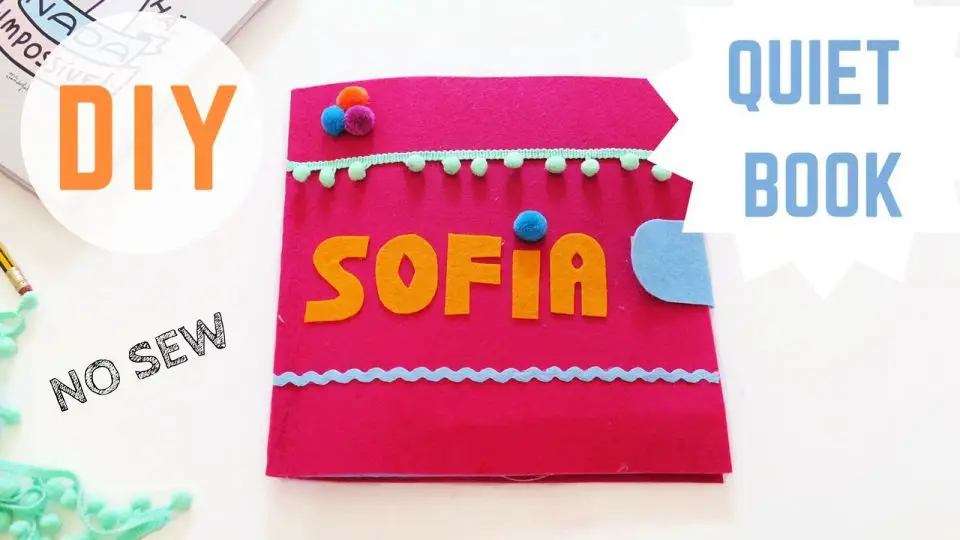
Thanks to modern DIY resources, creating a silent book for your little one doesn’t require any sewing skills. One such resource is the No Sew Quiet Book tutorial available on YouTube, which provides free patterns and a step-by-step guide to making an interactive and engaging quiet book using simple materials like felt, a glue gun, and scissors. With clear instructions and a user-friendly approach, this tutorial makes it easy for anyone to craft a unique, handmade book that will keep their child entertained and stimulated. By following the video tutorial and downloadable patterns, you can customize each page with various activities that are perfect for your child’s development and learning. Whether you’re a seasoned crafter or just starting out, this DIY project is sure to be a treasured keepsake for years to come.
Conclusion:
This comprehensive guide to creating 20 easy DIY quiet book patterns presents a unique opportunity to engage in a rewarding craft that not only fosters creative expression but also supports children’s educational development and key skills like fine motor control, problem-solving, and critical thinking. As you navigate the process of selecting themes, gathering materials, assembling, and customizing your quiet book, each step offers a chance to make lasting memories and learning experiences for the little ones in your life. Whether you’re just starting out or adding interactive features, the joy of making a quiet book is undeniable, as it’s not just about crafting, but also about cultivating meaningful connections with children.




